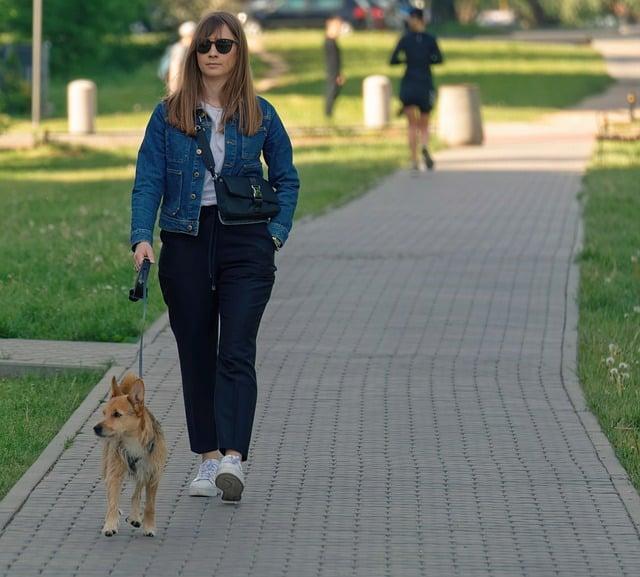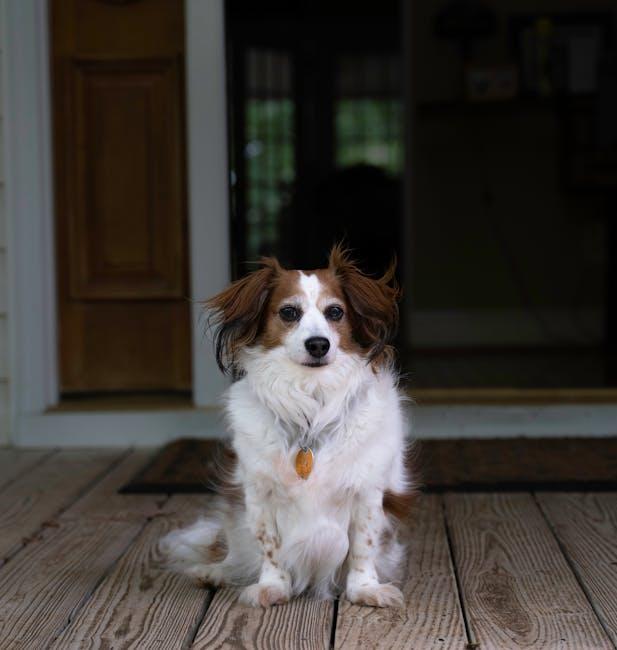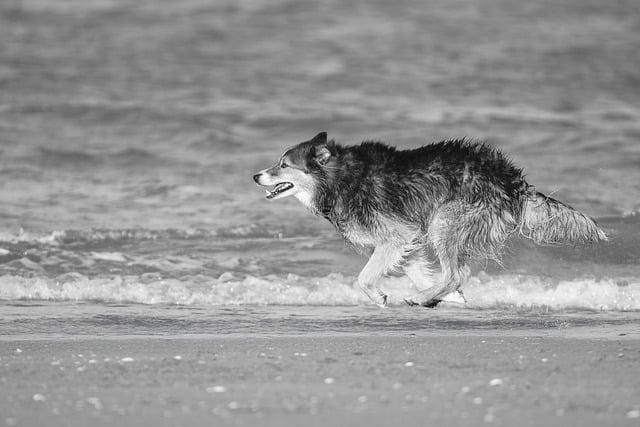Imagine a family looking for the perfect companion—someone big, friendly, and easy to manage. Enter the gentle giant: the Labrador Retriever. Known for their affectionate nature and intelligence, Labs are not only great with kids but also eager to please, making training a breeze. Their moderate energy levels mean they enjoy playtime but are equally happy lounging on the couch. With a Labrador, you get a loyal friend who fits seamlessly into family life. If you’re seeking a big dog that’s easy to love and care for, look no further!
Contents
- Understanding the Temperament of Large Dog Breeds for First-Time Owners
- Evaluating Maintenance and Care Requirements for Big Dogs
- Top Large Dog Breeds Known for Their Trainability and Adaptability
- Making the Right Choice: Factors to Consider When Selecting Your Ideal Big Dog
- Q&A
Understanding the Temperament of Large Dog Breeds for First-Time Owners
When considering a large dog breed, understanding their temperament is crucial, especially for first-time owners. Large dogs can vary significantly in personality, energy levels, and trainability, making it essential to choose a breed that aligns with your lifestyle. Some breeds are known for their gentle nature, while others may exhibit more assertive traits. By recognizing these differences, you can select a companion that will fit seamlessly into your home.
One of the most popular large breeds for novice owners is the **Labrador Retriever**. Renowned for their friendly disposition and eagerness to please, Labs are often described as the quintessential family dog. They are highly trainable, making them an excellent choice for first-time dog owners. Their playful yet calm demeanor allows them to adapt well to various living situations, whether in a bustling household or a quieter environment.
Another breed worth considering is the **Golden Retriever**. Similar to Labs, Golden Retrievers are known for their affectionate nature and intelligence. They thrive on human interaction and are incredibly loyal, which makes them great companions for families and individuals alike. Their gentle temperament and patience make them particularly suitable for homes with children or other pets, ensuring a harmonious living arrangement.
For those seeking a more unique option, the **Bernese Mountain Dog** is an excellent choice. These gentle giants are known for their calm and friendly demeanor. They are incredibly loyal and protective of their families, making them great watchdogs without being overly aggressive. Their affectionate nature and love for outdoor activities make them ideal for families who enjoy spending time outside, while their laid-back attitude allows them to relax indoors as well.
Evaluating Maintenance and Care Requirements for Big Dogs
When considering a large dog, it’s essential to understand their maintenance and care requirements to ensure a harmonious relationship. Big dogs often have unique needs that differ from smaller breeds, and meeting these needs can significantly enhance their quality of life. Regular exercise is crucial; large breeds typically require more physical activity to stay healthy and happy. This can include daily walks, playtime in a secure yard, or engaging in dog sports that cater to their energy levels.
Nutrition plays a vital role in the overall well-being of big dogs. They need a balanced diet tailored to their size and activity level. Look for high-quality dog food that lists meat as the first ingredient and is specifically formulated for large breeds. Additionally, be mindful of portion control to prevent obesity, which can lead to joint issues and other health problems. Consulting with a veterinarian can help you determine the best dietary plan for your furry friend.
Grooming is another important aspect of caring for large dogs. While some breeds have minimal grooming needs, others may require regular brushing to manage shedding and maintain a healthy coat. **Consider the following grooming tips**:
- Brush your dog regularly to reduce shedding and prevent matting.
- Schedule regular baths, but avoid over-bathing, which can strip natural oils.
- Keep an eye on their nails and trim them as needed to prevent discomfort.
Lastly, health care is paramount for large breeds, as they can be prone to specific health issues such as hip dysplasia and heart problems. Regular veterinary check-ups are essential for early detection and prevention of potential health concerns. **Be proactive by**:
- Staying up-to-date with vaccinations and preventive treatments.
- Monitoring their weight and adjusting their diet and exercise accordingly.
- Being aware of breed-specific health issues and discussing them with your vet.
Top Large Dog Breeds Known for Their Trainability and Adaptability
When considering large dog breeds, trainability and adaptability are crucial factors that can significantly enhance the ownership experience. Certain breeds stand out for their intelligence and eagerness to please, making them easier to train and integrate into various living situations. These dogs not only respond well to commands but also adapt seamlessly to different environments, whether it be a bustling city or a quiet countryside.
Among the top contenders, the **Labrador Retriever** is often hailed for its friendly disposition and high intelligence. This breed excels in obedience training and is known for its ability to learn commands quickly. Their sociable nature makes them excellent companions for families, and they thrive in active households where they can engage in various activities. Additionally, Labs are versatile, adapting well to both urban and rural settings.
Another breed worth mentioning is the **Golden Retriever**, renowned for its gentle temperament and remarkable trainability. These dogs are not only eager learners but also possess a natural affinity for social interaction, making them ideal for families with children. Their adaptability shines through in various roles, from therapy dogs to service animals, showcasing their ability to adjust to different tasks and environments with ease.
The **German Shepherd** is also a prime example of a large breed that combines trainability with adaptability. Known for their intelligence and loyalty, German Shepherds excel in obedience training and are often employed in police and military roles due to their keen ability to learn complex tasks. Their protective nature and versatility allow them to thrive in various situations, whether as a family pet or a working dog, making them a top choice for those seeking a dependable companion.
Making the Right Choice: Factors to Consider When Selecting Your Ideal Big Dog
When considering the perfect large breed dog for your lifestyle, it’s essential to evaluate several key factors that can significantly impact your experience as a pet owner. **Temperament** is one of the most critical aspects; some breeds are known for their gentle and friendly nature, making them excellent companions for families and individuals alike. Look for breeds that are known for their calm demeanor and adaptability, as these traits can lead to a more harmonious household.
Another important factor is **exercise requirements**. Large dogs often have higher energy levels and need regular physical activity to stay healthy and happy. Consider your daily routine and how much time you can dedicate to walking, playing, and engaging with your dog. Breeds like the **Labrador Retriever** or **Golden Retriever** are known for their love of outdoor activities, while others, such as the **Newfoundland**, may be more laid-back and require less vigorous exercise.
**Grooming needs** also play a significant role in your decision-making process. Some large breeds have thick coats that require regular brushing and maintenance, while others have shorter hair that is easier to manage. If you prefer a low-maintenance option, consider breeds like the **Boxer** or **Doberman Pinscher**, which typically have minimal grooming needs. Understanding the grooming requirements can help you choose a dog that fits seamlessly into your lifestyle.
Lastly, consider the **space** you have available for a big dog. Large breeds often need ample room to move around comfortably, both indoors and outdoors. If you live in a smaller space, look for breeds that are known to adapt well to apartment living, such as the **Great Dane** or **Bullmastiff**. Ensuring that your living environment can accommodate a large dog will contribute to a happier and healthier pet, making your experience as a dog owner more enjoyable.
Q&A
-
What are some of the easiest big dog breeds to own?
Some of the easiest big dog breeds to own include:
- Labrador Retriever: Known for their friendly nature and adaptability.
- Golden Retriever: Gentle, intelligent, and eager to please.
- Bernese Mountain Dog: Calm and affectionate, great with families.
- Newfoundland: Gentle giants that are known for their sweet temperament.
-
What makes a big dog easy to train?
Big dogs that are easy to train typically possess:
- Intelligence: Breeds like Labradors and Golden Retrievers are quick learners.
- Desire to please: Many friendly breeds are motivated to follow commands.
- Calm demeanor: Less hyperactive breeds are easier to manage during training sessions.
-
Are big dogs suitable for families?
Yes, many big dog breeds are excellent family pets because they:
- Are gentle and patient: Breeds like the Bernese Mountain Dog are known for their calmness around children.
- Provide protection: Their size can be a deterrent to intruders.
- Encourage outdoor activity: Big dogs often enjoy playtime and exercise, promoting a healthy lifestyle for the whole family.
-
What are the grooming needs of big dogs?
The grooming needs vary by breed, but generally:
- Short-haired breeds: Such as the Labrador require minimal grooming.
- Long-haired breeds: Like the Newfoundland need regular brushing to prevent matting.
- Bathing frequency: Depends on the dog’s activity level and coat type, but most big dogs can be bathed every few months.
choosing the right big dog can transform your life. By considering breeds known for their gentle temperament and adaptability, you can enjoy the companionship of a large canine without the stress. Embrace the joy of owning a big dog today!

大家好,我是彼得潘,專業的手法身體治療師。我喜歡探索和研究各種主題,並透過與人工智慧的合作分享專業、實用、有趣的文章。我們定期進行人工審核,以確保內容的準確性。如果您發現文章中有任何不準確的地方,請隨時與我們聯繫,我們會及時糾正。您可以透過 [email protected] 與我們聯繫。



